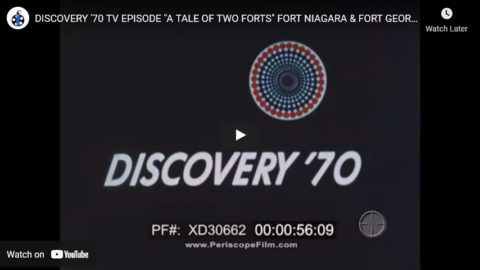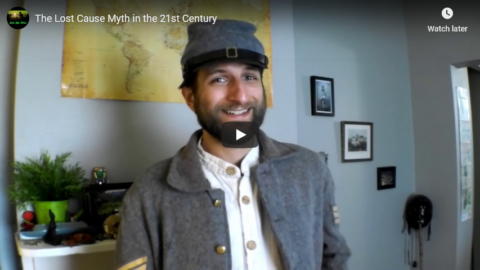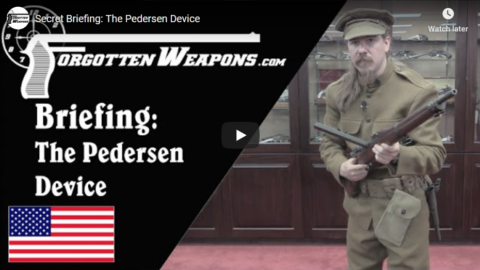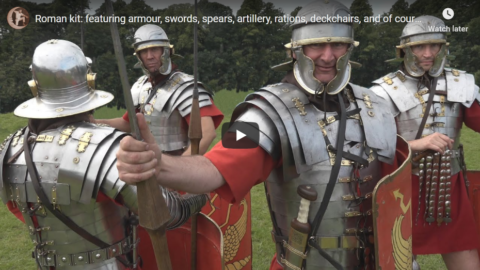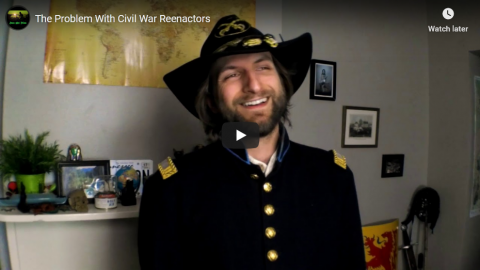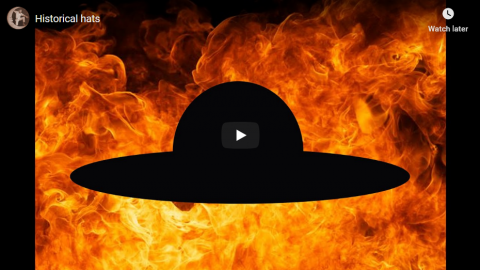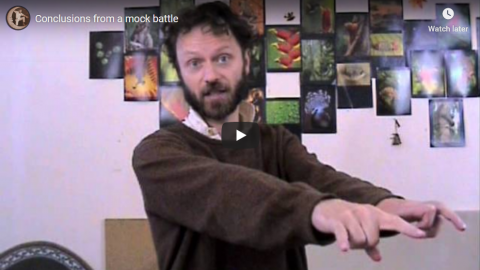Townsends
Published 26 Nov 2022
(more…)
March 25, 2023
QotD: Sparta’s fate
What becomes of Sparta after its hegemony shatters in 371, after Philip II humiliates it in 338 and after Antipater crushes it in 330? This is a part of Spartan history we don’t much discuss, but it provides a useful coda on the Sparta of the fifth and fourth century. Athens, after all, remained a major and important city in Greece through the Roman period – a center for commerce and culture. Corinth – though burned by the Romans – was rebuilt and remained a crucial and wealthy port under the Romans.
What became of Sparta?
In short, Sparta became a theme-park. A quaint tourist get-away where wealthy Greeks and Romans could come to look and stare at the quaint Spartans and their silly rituals. It developed a tourism industry and the markets even catered to the needs of the elite Roman tourists who went (Plutarch and Cicero both did so, Plut. Lyc. 18.1; Tusc. 5.77).
In term of civic organization, after Cleomenes III’s last gasp effort to make Sparta relevant – an effort that nearly wiped out the entire remaining Spartiate class (Plut. Cleom. 28.5) – Sparta increasingly resembled any other Hellenistic Greek polis, albeit a relatively famous and also poor one. Its material and literary culture seem to converge with the rest of the Greeks, with the only distinctively Spartan elements of the society being essentially Potemkin rituals for boys put on for the tourists who seem to be keeping the economy running and keeping what is left of Sparta in the good graces of their Roman overlords.
Thus ended Sparta: not with a brave last stand. Not with mighty deeds of valor. Or any great cultural contribution at all. A tourist trap for rich and bored Romans.
Bret Devereaux, “Collections: This. Isn’t. Sparta. Part VII: Spartan Ends”, A Collection of Unmitigated Pedantry, 2019-09-27.
January 1, 2023
Full Cabin Build – 4K Full Length – Townsends Wilderness Homestead
Townsends
Published 29 Aug 20220:00 – Laying the Foundation
4:39 – The Walls Begin
8:22 – Prepping the Fireplace
9:52 – Finishing the Walls
15:58 – The Roof Design
17:04 – Adding the Purlins
20:29 – The Doorframe
21:32 – The Final Purlins
24:00 – Roofing Materials
25:47 – Adding the Bark Shingles
27:37 – Roof Wrap-Up
29:03 – Door Jams
29:47 – Opening the Fireplace
30:58 – Building the Fireplace
36:06 – Adding the Door
37:54 – The First Fire
39:02 – A Winter Safe Haven
(more…)
December 1, 2022
QotD: Movie swordfighting
I was reminded, earlier today, that one of the interesting side effects of knowing something about hand-to-hand and contact-weapons-based martial arts makes a big difference in how you see movies.
Most people don’t have that knowledge. So today I’m going to write about the quality of sword choreography in movies, and how that has changed over time, from the point of view of someone who is an experienced multi-style martial artist in both sword and empty hand. I think this illuminates a larger story about the place of martial arts in popular Western culture.
The first thing to know is this: with only rare exceptions, any Western swordfighting you see in older movies is going to be seriously anachronistic. It’s almost all derived from French high-line fencing, which is also the basis for Olympic sport fencing. French high-line is a very late style, not actually fully developed until early 1800s, that is adapted for very light thrusting weapons. These are not at all typical of the swords in use over most of recorded history.
In particular, the real-life inspirations for the Three Musketeers, in the 1620s, didn’t fight anything like their movie versions. They used rapiers – thrusting swords – all right, but their weapons were quite a bit longer and heavier than a 19th-century smallsword. Correspondingly, the tempo of a fight had to be slower, with more pauses as the fighters watched for an opening (a weakness in stance or balance, or a momentary loss of concentration). Normal guard position was lower and covered more of center line, not the point-it-straight-at-you of high line. You find all this out pretty quickly if you actually train with these weapons.
The thing is, real Three Musketeers fencing is less flashy and dramatic-looking than French high-line. So for decades there was never any real incentive for moviemakers to do the authentic thing. Even if there had been, audiences conditioned by those decades of of high-line would have thought it looked wrong!
Eric S. Raymond, “A martial artist looks at swordfighting in the movies”, Armed and Dangerous, 2019-01-13.
November 14, 2022
QotD: The first modern revolution
The first modern revolution was neither French nor American, but English. Long before Louis XVI went to the guillotine, or Washington crossed the Delaware, the country which later became renowned for stiff upper lips and proper tea went to war with itself, killed its king, replaced its monarchy with a republican government and unleashed a religious revolution which sought to scorch away the old world in God’s purifying fire.
One of the dark little secrets of my past is my teenage membership of the English Civil War Society. I spent weekends dressed in 17th-century costumes and oversized helmets, lined up in fields or on medieval streets, re-enacting battles from the 1640s. I still have my old breeches in the loft, and the pewter tankard I would drink beer from afterwards with a load of large, bearded men who, just for a day or two, had allowed themselves to be transported back in time.
I was a pikeman in John Bright’s Regiment of Foote, a genuine regiment in the parliamentary army. We were a Leveller regiment, which is to say that this part of the army was politically radical. For the Levellers, the end of the monarchy was to be just the beginning. They aimed to “sett all things straight, and rayse a parity and community in the kingdom”. Among their varied demands were universal suffrage, religious freedom and something approaching modern parliamentary democracy.
The Levellers were far from alone in their ambitions to remake the former Kingdom. Ranters, Seekers, Diggers, Fifth Monarchists, Quakers, Muggletonians: suddenly the country was blooming with radical sects offering idealistic visions of utopian Christian brotherhood. In his classic study of the English Revolution, The World Turned Upside Down, historian Christopher Hill quotes Lawrence Clarkson, leader of the Ranters, who offered a radical interpretation of the Christian Gospel. There was no afterlife, said Clarkson; only the present mattered, and in the present all people should be equal, as they were in the eyes of God:
“Swearing i’th light, gloriously”, and “wanton kisses”, may help to liberate us from the repressive ethic which our masters are trying to impose on us — a regime in which property is more important than life, marriage than love, faith in a wicked God than the charity which the Christ in us teaches.
Modernise Clarkson’s language and he could have been speaking in the Sixties rather than the 1640s. Needless to say, his vision of free love and free religion, like the Leveller vision of universal equality, was neither shared nor enacted by those at the apex of the social pyramid. But though Cromwell’s Protectorate, and later the restored monarchy, attempted to maintain the social order, forces had been unleashed which would change England and the wider world entirely. Some celebrated this fact, others feared it, but in their hearts everyone could sense the truth that Gerard Winstanley, leader of the Diggers, was prepared to openly declare: “The old world … is running up like parchment in the fire”.
Paul Kingsnorth, “The West needs to grow up”, UnHerd, 2022-07-29.
January 20, 2022
Discovery ’70 — “A Tale of Two Forts” — Fort Niagara & Fort George, War of 1812
PeriscopeFilm
Published 19 Oct 2021Want to support this channel and help us preserve old films? Visit https://www.patreon.com/PeriscopeFilm
Visit our website www.PeriscopeFilm.comThis episode of the television show Discovery ’70 is hosted by Virginia Gibson. “A Tale of Two Forts” focuses on two important historic forts from the War of 1812, Fort Niagara and Fort George, which are located between the United States and Canada on the Niagara River. The episode contains re-enactments of the activities at the forts, a bitter battle for control of the Niagara River valley, and the Battle of Queenston Heights — the first major battle of the war. Fort Niagara was an important American post near the outlet of the Niagara River into Lake Ontario. During the early days of the war, it launched artillery fire against the British at Fort George on the other side of the river. On 27 May 1813, the Americans won the Battle of Fort George, and held the enemy fortification. Later that same year, after the burning of Newark and with American forces in disarray, the British advanced on Fort George, forcing the American garrison to abandon it. The artillery could not be withdrawn from Fort George and was thrown into the ditch surrounding the fort. The American garrison at Fort Niagara was then taken by surprise in a night assault by a select force of British regular infantry. Fort Niagara remained in British possession until the end of the war, until they relinquished it under the terms of the Treaty of Ghent. The War of 1812 was won by the British, and was the last military conflict between the two countries.
In 1812, the U.S. Army’s Fort Niagara stood near the British Army’s Fort George in Canada. The introduction of the film begins with a re-enactment of U.S. soldiers in Revolutionary era dress advancing by canoe on the river at :12. British Redcoat soldiers and cannons at Fort George. Main title. At 1:16 the film shows small vessels near Lake Ontario, which was Indian land in 1812. At 1:27 a cannon. At 1:43 the American Fort Niagara, made of stone and brick. At 2:17 the French “stone house” is shown. This was actually a disguised fort with cannon positions. Defenses and the outside of the fort at 2:52. At 4:08, to show the seizure of the fort by the British, a Redcoat is shown triumphantly walking past the fort. The fort served as a refuge for English loyalists at 4:55. At 5:57 an American drummer, and Continental type soldiers. At 6:59 a woman and her daughter go to the well to fetch water. A type of oven is shown that heated cannonballs, so that they could not be re-used by the enemy. At 8:07 an overhead view of Fort George. Houses, log stockades, ladders, saws. British soldiers on parade and marching. At 11:20 British soldiers firing, and the Union Jack being raised. At 12:20 English and American officers dine together. The generals of both Fort George and Fort Niagara are shown in the re-enactment — Major-General Sir Isaac Brock for the British and American General Stephen Van Rensselaer. A Redcoat rides a horse toward the house where the dinner takes place, bearing news that the U.S. has declared war on the British. U.S. soldiers canoe past the island at 14:34, attempting to establish a foothold on the Canadian side of the Niagara River. The American assault on October 13, known as the Battle of Queenston Heights — the first major battle in the War of 1812 — takes place. American soldiers attempting plant “Old Glory” at 15:58. At 16:48 at Fort George, General Brock writes dispatches requesting reinforcements, then leads his men into battle as part of the counter attack. General Brock is fatally hit by sniper fire 17:51. The forts firing cannons at each other 18:13. At 19:17 British soldiers firing at American soldiers, the British prevail. At 19:49 the Americans retreating in defeat. At 20:07 The British salute their fallen general. The Americans salute Brock as well. The film ends at 21:04.
We encourage viewers to add comments and, especially, to provide additional information about our videos by adding a comment! See something interesting? Tell people what it is and what they can see by writing something for example: “01:00:12:00 — President Roosevelt is seen meeting with Winston Churchill at the Quebec Conference.”
This film is part of the Periscope Film LLC archive, one of the largest historic military, transportation, and aviation stock footage collections in the USA. Entirely film backed, this material is available for licensing in 24p HD, 2k and 4k. For more information visit http://www.PeriscopeFilm.com
March 11, 2021
Boris as a latter-day Prince Rupert of the Rhine?
In The Critic, Graham Stewart portrays the British Prime Minister and Sir Keir Starmer, leader of Her Majesty’s loyal opposition in the House of Commons as English Civil War combatants:
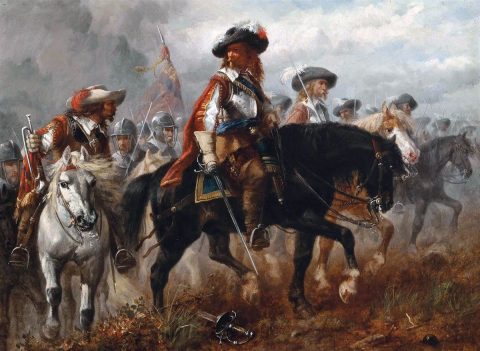
King Charles I and Prince Rupert before the Battle of Naseby 14th June 1645 during the English Civil War.
19th century artist unknown, from Wikimedia Commons.
Prime Minister’s Questions distils into a single gladiatorial contest what thousands of enthusiasts in a charitable organisation called the Sealed Knot perform across the country most summers – namely the re-enactment of battles of the English Civil War.
Unsmiling, relentless, serious to the point of bringing despair to his foot-soldiers as much as his opponents, Sir Keir Starmer is a Roundhead general for our times. Nobody believes better than he that virtue and providence are his shield. This faith sustains him whilst the fickle and ungodly court of popular opinion fails to rally to his command. He believes that holding firm, doggedly probing the enemy with the long pike and short-sword will eventually prevail, no matter how long the march to victory may prove.
Facing him, the generous girth of the nation’s leading Cavalier occupies his command-post. His long, uncut hair resembling a thatch on a half-timbered cottage, Boris Johnson lands at the despatch box as if he has just fallen from his place of concealment in an oak tree, bleary and under-prepared, but confident in assertion. It might be said of him, as Sir Edward Bulwer Lytton once said of the parliamentary style of a previous Tory prime minister, Lord Derby, that Johnson is “irregularly great, frank, haughty, bold – the Rupert of debate.”
Today was one of those occasions when the prime minister did indeed resemble the dashing Prince Rupert of the Rhine. Unfortunately, it was the moment during the decisive civil war battle of Naseby when the great Cavalier commander charged his horsemen through the parliamentary lines with such momentum that they kept going and ended up spending the rest of the day plundering a distant baggage train rather than returning to determine the result of the battle.
September 20, 2020
The Lost Cause Myth in the 21st Century
Atun-Shei Films
Published 23 Feb 2019A former Gettysburg tour guide talks about how the American Civil War is remembered today.
Support Atun-Shei Films on Patreon ► https://www.patreon.com/atunsheifilms
#CivilWar #Confederacy #AmericanHistory
Watch our film ALIEN, BABY! free with Prime ► http://a.co/d/3QjqOWv
Reddit ► https://www.reddit.com/r/atunsheifilms
Twitter ► https://twitter.com/alienbabymovie
Instagram ► https://www.instagram.com/atunsheifilms
Merch ► https://atun-sheifilms.bandcamp.com
August 1, 2020
Secret Briefing: The Pedersen Device
Forgotten Weapons
Published 8 Aug 2016http://www.patreon.com/ForgottenWeapons
Welcome to your briefing on the new equipment we are issuing for the Spring Offensive of 1919. With this new secret weapon, we can finally push the Germans out of France and end the war!
July 28, 2020
Roman kit: featuring armour, swords, spears, artillery, rations, deckchairs, and of course shoes
Lindybeige
Published 27 Jul 2020Go to https://expressvpn.com/lindybeige and find out how you can get three months free.
A video of re-enactors and their Roman kit. Sorry about the wind noise.
Support me on Patreon: https://www.patreon.com/Lindybeige
Here’s a link to the Ermine Street Guard – Britain’s foremost imperial Roman re-enactment group: http://www.erminestreetguard.co.uk
Was your re-enactment group featured? Ask for a link here!
Buy the music – the music played at the end of my videos is now available here: https://lindybeige.bandcamp.com/track…
Buy tat (merch):
https://outloudmerch.com/collections/…Lindybeige: a channel of archaeology, ancient and medieval warfare, rants, swing dance, travelogues, evolution, and whatever else occurs to me to make.
▼ Follow me…
Twitter: https://twitter.com/Lindybeige I may have some drivel to contribute to the Twittersphere, plus you get notice of uploads.
My website:
http://www.LloydianAspects.co.uk
May 25, 2020
The Problem With Civil War Reenactors
Atun-Shei Films
Published 6 Feb 2019A former Gettysburg tour guide and confirmed farb talks smack about folks who take the hobby way too seriously.
Support Atun-Shei Films on Patreon ► https://www.patreon.com/atunsheifilms
#AmericanCivilWar #Reenactment #History
Watch our film ALIEN, BABY! free with Prime ► http://a.co/d/3QjqOWv
Reddit ► https://www.reddit.com/r/atunsheifilms
Twitter ► https://twitter.com/alienbabymovie
Instagram ► https://www.instagram.com/atunsheifilms
Merch ► https://atun-sheifilms.bandcamp.com
November 25, 2019
Historical hats
Lindybeige
Published 4 Mar 2015Support me on Patreon: https://www.patreon.com/Lindybeige
More videos here: https://www.youtube.com/playlist?list…There were so many types of hat in the past, and yet it turns out that many of them were actually the same.
Lindybeige: a channel of archaeology, ancient and medieval warfare, rants, swing dance, travelogues, evolution, and whatever else occurs to me to make.
▼ Follow me…
Twitter: https://twitter.com/Lindybeige I may have some drivel to contribute to the Twittersphere, plus you get notice of uploads.
website: http://www.LloydianAspects.co.uk
November 13, 2019
Conclusions from a mock battle
Lindybeige
Published 19 Jul 2013Re-enactment is a form of experimental archaeology.
September 28, 2019
Tank Convoy | Operation Market Garden 75 | The Tank Museum
The Tank Museum
Published 27 Sep 2019September 2019 marked the 75th Anniversary of Operation Market Garden. Here we see highlights of the XXX Corps armoured convoy reenactment which took place to commemorate this event. Find out how the Museum’s vehicles fared during the convoy.
Support the work of The Tank Museum on Patreon: ► https://www.patreon.com/tankmuseum
Visit The Tank Museum SHOP: ► https://tankmuseumshop.org/
Twitter: ► https://twitter.com/TankMuseum
Instagram: ► https://www.instagram.com/tankmuseum/
Tiger Tank Blog: ► http://blog.tiger-tank.com/
Tank 100 First World War Centenary Blog: ► http://tank100.com/
July 7, 2018
History Buffs: Gettysburg
History Buffs
Published on 19 Feb 2018

